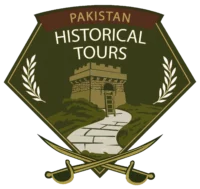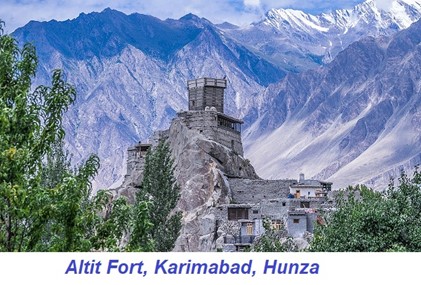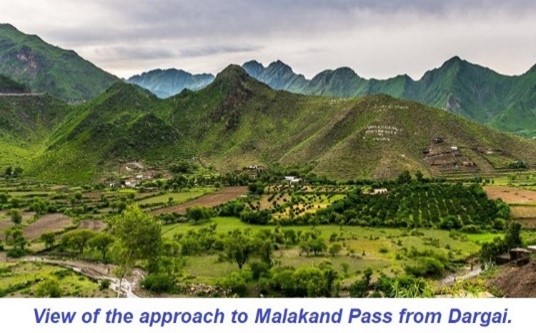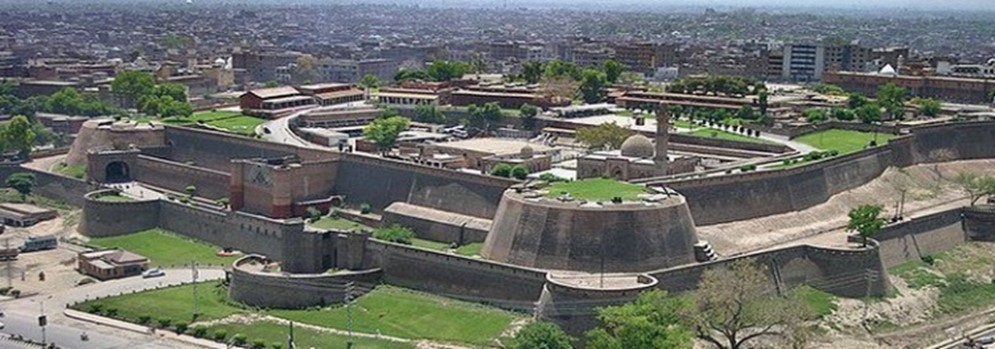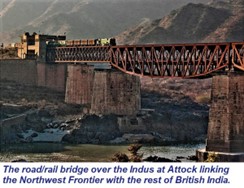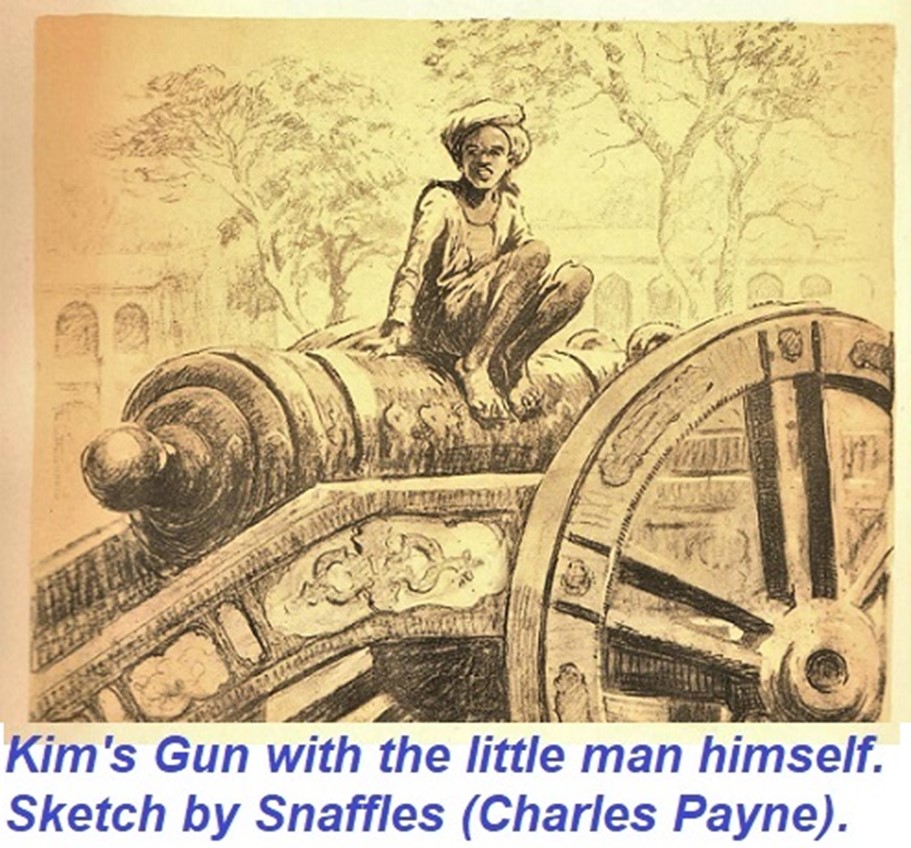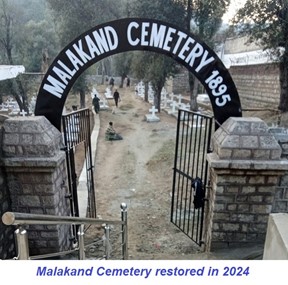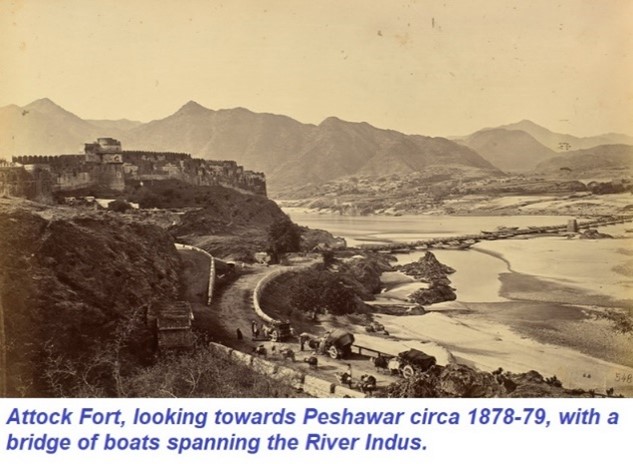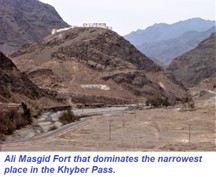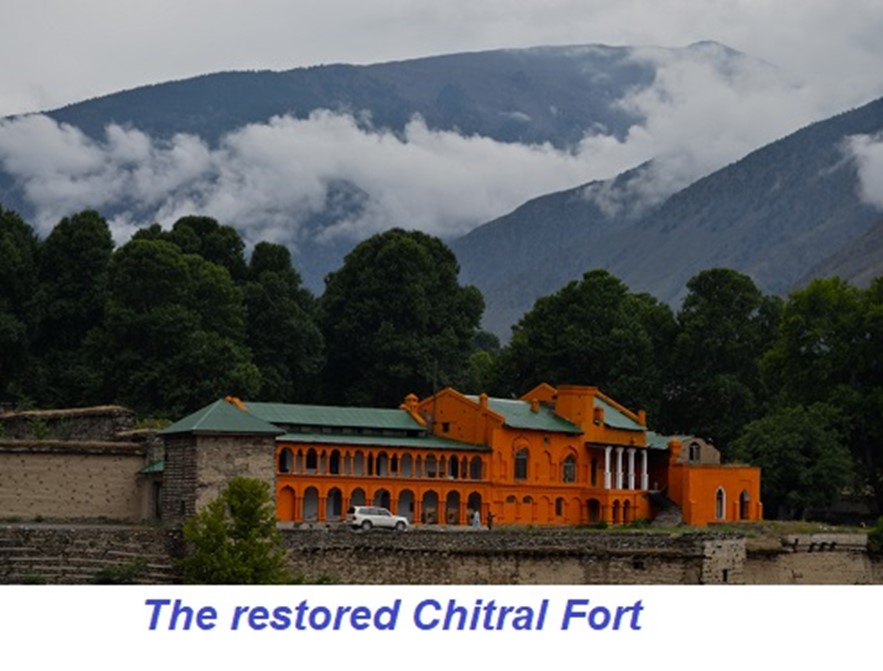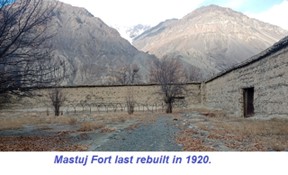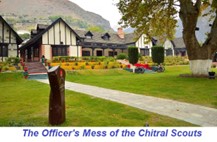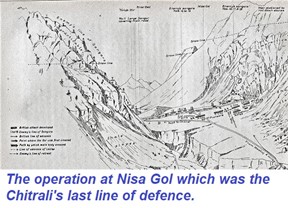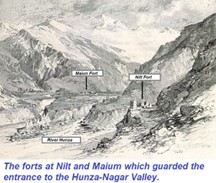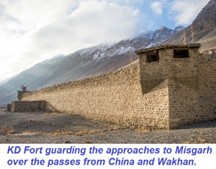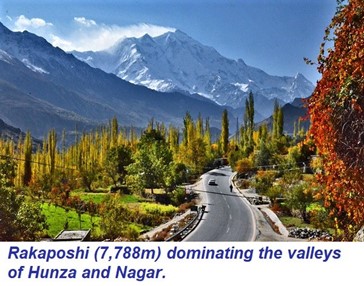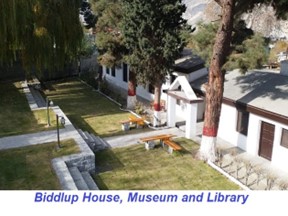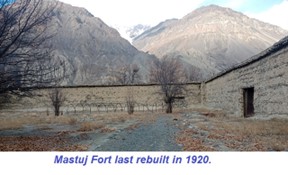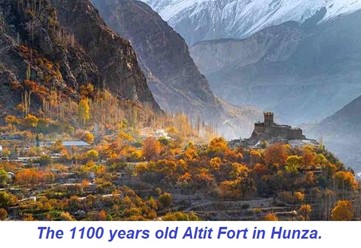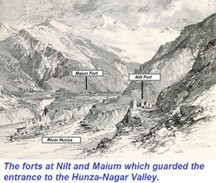The Great Game Tour
Wish List
Adding item to wishlist requires an account
Don't have an account? Create one.
When you book with an account, you will be able to track your payment status, track the confirmation and you can also rate the tour after you finished the tour.
Sign Up
Price
Book Now
0
Tour Details
It’s a tour that you will always remember. It combines historic cities, 19 century great power rivalry and spectacular scenery. From Kipling’s Lahore to Peshawar and the Khyber Pass, it also penetrates into high mountain ranges in the north of Pakistan. Here the dying stages of the Great Game was played out in the Hunza Expedition & the Relief of Chitral.
Departure & Return Location
Lahore – Islamabad
Departure Time
11:30PM
Price Includes
- ✔ Pick & Drop
- ✔ Dedicated Driver with Private Grand Cabin
- ✔ 2 Quality meals per day
- ✔ Tour Guide
- ✔ Fuel for Vehicle Covered in Tour Plan
- ✔ Jeep Ride
- ✔ All Toll and Taxes included
Price Excludes
-
- ✖ Any item not mentioned above
- ✖ Lunch
- ✖ Medication, evacuation and rescue etc. in emergencies
- ✖ Personal insurances of clients
- ✖ Laundry & phone calls or other expenses of personal.
Itinerary
Day 1:(Arrival in Lahore)
- Fly into Lahore where our staff will welcome you and take you to the hotel.
Day 2:(Kipling's Lahore)
- Unfortunately, the building where Kipling’s Civil & Military Gazette was located on the Lahore Mall was demolished so we will head straight for the Tollinton Market. This was the first location of the Lahore Museum where Rudyard’s father John Lockwood was one of its early curators. In Kim’s story, this building was the model for the Aijaib Ghar or House of Wonders.
 Our next stop will be the present Lahore Museum established in 1894 which is renowned for its extensive collection of art from Indo-Greek and Gandhara kingdoms as well as the Mughal, Sikh and British Empires in India. The centerpiece of the collection is the Zamzama, also known as Kim’s gun. We will then walk over to the Mayo School of Industrial Arts (now the National College of Arts) where John Lockwood was the first principal in 1875. After lunch, we will visit the 200-year-old Anarkali Bazaar and tour the old walled city which Kipling used to frequent. The highlight will be a visit to the most ornately decorated Wazir Khan’s Mosque constructed in 1641 and the private Fakir Khana Museum with its priceless artifacts collected over generation. In the evening you will be hosted to a delicious BBQ dinner in the walled city next to the 350-year-old Badshahi Mosque.
Our next stop will be the present Lahore Museum established in 1894 which is renowned for its extensive collection of art from Indo-Greek and Gandhara kingdoms as well as the Mughal, Sikh and British Empires in India. The centerpiece of the collection is the Zamzama, also known as Kim’s gun. We will then walk over to the Mayo School of Industrial Arts (now the National College of Arts) where John Lockwood was the first principal in 1875. After lunch, we will visit the 200-year-old Anarkali Bazaar and tour the old walled city which Kipling used to frequent. The highlight will be a visit to the most ornately decorated Wazir Khan’s Mosque constructed in 1641 and the private Fakir Khana Museum with its priceless artifacts collected over generation. In the evening you will be hosted to a delicious BBQ dinner in the walled city next to the 350-year-old Badshahi Mosque.
Day 3:(Exploring Colonial Archives and Military History)
- In the morning, we will visit the relatively unknown museum of the Punjab Archives, located in the premises of a government secretariat which used to be the residence of a French mercenary who was a general in the army of Maharaja Ranjit Singh. We will wind up the morning with a visit to Sang-e-Meel publishers who have reprinted an assortment of old books and documents related to British India era and the region. In the afternoon we will travel to Rawalpindi by the motorway and arrive in time to freshen up and meet Maj Gen Ali Hamid over dinner. He is a Military Historian and one of the organizers of the tour.
Day 4:(Rawalpindi)
- In the morning, we will visit the Army Institute of Military History followed by a tour of the old Rawalpindi Club that has been beautifully renovated to its former glory. At the club, the historian Ali Akbar will deliver a talk on the history of Rawalpindi. After an early lunch at the club, we will depart for Peshawar and travel part way on the Grand Trunk Road so that we can take a tour of the iconic Attock Fort. It was constructed in 1583 by Emperor Akbar to guard the crossing over the River Indus. Time permitting, we will also take a walk under the steel arches of the Attock road /rail bridge constructed in 1895.
 It was the final link for an all-weather artery to Peshawar and the Afghan border. Peshawar was the main garrison of the British in the North West Frontier and you will be staying for the next 2 nights at The Barracks, a boutique hotel established in renovated accommodation for British soldiers. At dinner you will be joined by another organizer of the tour, the historian Dr. Ali Jan.
It was the final link for an all-weather artery to Peshawar and the Afghan border. Peshawar was the main garrison of the British in the North West Frontier and you will be staying for the next 2 nights at The Barracks, a boutique hotel established in renovated accommodation for British soldiers. At dinner you will be joined by another organizer of the tour, the historian Dr. Ali Jan. 
- We set off to spend the morning in the historic Khyber Pass, through which countless armies have marched over the centuries. In recent centuries, this strategic gateway was heavily garrisoned by the Afghans, Sikhs and British in turn. Past the imposing Shagai Fort built on the eastern entrance to the pass in 1927 we stop at the defile of Ali Masjid which was the scene of the first battle of the Second Afghan War, 1878-80. From here it’s half-an-hour drive to the historic Khyber Rifles mess at Landikotal where we will have a traditional lunch. Back in Peshawar, Dr Ali Jan will take us on a fascinating walk tour through the Qissa Khwani Bazaar (the Bazaar of the Story Tellers). That evening you will be entertained for dinner at the iconic Peshawar Club.
Day 5:(Malakand Pass, Lowari & Chitral)
- We will depart for Chitral on the road to the Malakand Pass, the gateways to the picturesque valley of Swat and onwards to Dir and Chitral. From the Malakand Fort, we will get a bird’s eye view of the routs taken by Gen Low’s division for successfully assaulting the Pass in 1895, while on its way to relieve Chitral. Before departing you will visit the Malakand Cemetery, which was established the same year and restored in 2024.
 From here it’s a 7 hours’ drive to Chitral through Dir and Lowari which was the same route taken by the relief force which then scaled the 3000 meters high Lowari Pass. An 8.5 km long tunnel under the pass enables us to drastically reduce the travel time enabling us to enter the valley of Chitral for a welcome night stay.
From here it’s a 7 hours’ drive to Chitral through Dir and Lowari which was the same route taken by the relief force which then scaled the 3000 meters high Lowari Pass. An 8.5 km long tunnel under the pass enables us to drastically reduce the travel time enabling us to enter the valley of Chitral for a welcome night stay.
Day 6:(Chitral & Mastuj)
- The next morning, we will first visit the Relief of Chitral Memorial that was originally constructed on a hill outside Nowshera where the division had assembled for the campaign. It was severely at risk and in 2025 with funding from the Commonwealth Heritage Form, it was relocated to Chitral its rightful location. The mud fort that had been besieged in 1895 has been replaced by a more solid and aesthetically pleasing structure and is private residence of ceremonial Mehtar. We have obtained his permission to view the Darbar Hall and state rooms which were renovated in 2015 following an earthquake.
 After lunch at the enchanting Chitral Scouts mess cum museum, we depart for Mastuj to trace backwards the route taken by Col Kelly and his team of 1400 indomitable soldiers and levies. We will be spending the night in the rustic wooden chalets of Hotel Hindukush Heights on the grounds of Mastuj Fort where Kelley’s troops relieved a minor siege.
After lunch at the enchanting Chitral Scouts mess cum museum, we depart for Mastuj to trace backwards the route taken by Col Kelly and his team of 1400 indomitable soldiers and levies. We will be spending the night in the rustic wooden chalets of Hotel Hindukush Heights on the grounds of Mastuj Fort where Kelley’s troops relieved a minor siege.
Day 7:(Mastuj Fort, Shandur and Gilgit)
- Before we depart for Gilgit, we will take you for a tour of the Mastuj Fort, situated on a plateau at a confluence of the Yarkhun and Mastuj River. This 300-year-old for is the ancestral property of the Ul-Mulk family and is constructed of stone, mud. It was twice rebuilt and is currently being restored again by the Commonwealth Heritage Forum. On our way to Shandur Pass, we will stop to view the positions at Nisa Gol where a force of Chitralis were driven off by an attack.
 After a stiff climb of 1000 meters, the road undulates gently over the high-altitude plateau of Shandur which has the highest polo ground in the world. Kelly’s contingent crossed the 3,800 meters pass in April through deep snow while carrying two guns. The journey will take us over 8 hours but we will arrive in Gilgit in time for dinner and a well-deserved good nights sleep.
After a stiff climb of 1000 meters, the road undulates gently over the high-altitude plateau of Shandur which has the highest polo ground in the world. Kelly’s contingent crossed the 3,800 meters pass in April through deep snow while carrying two guns. The journey will take us over 8 hours but we will arrive in Gilgit in time for dinner and a well-deserved good nights sleep.
Day 8:(Gilgit and to Hunza)
- Having had a long journey the previous day, today we will begin with a slow start and after breakfast visit the fascinating Biddulph House & Library. It bears the name of Capt John Biddulph, who was the first Officer on Special Duty that the British placed in Gilgit in 1877 to watch the gateways through the Karakorum and Hindukush Ranges. The house’s distinctive Victorian-style architecture features intricate woodwork, spacious rooms, and a lush garden.
 Some well-known names like Francis Younghusband, Colonel Algernon Durand and Colonel Frederick Marshman Bailey who served as Political Agents stayed in Biddulph House. Before mid-day, we depart for Hunza and stop for lunch under the shadow of Nanga Parbat which rises to over 8,000 meters. At Nilt we will take a break to study the Battle of the Nilt Nalluh, the sangars occupied by the defenders and the route through which British troops penetrated the defenses.
Some well-known names like Francis Younghusband, Colonel Algernon Durand and Colonel Frederick Marshman Bailey who served as Political Agents stayed in Biddulph House. Before mid-day, we depart for Hunza and stop for lunch under the shadow of Nanga Parbat which rises to over 8,000 meters. At Nilt we will take a break to study the Battle of the Nilt Nalluh, the sangars occupied by the defenders and the route through which British troops penetrated the defenses.
We now enter he valley of Hunza which inspired Shangrila in James Hilton’s famous novel, Lost Horizon. We continue on a picturesque drive of two hours along the Atabad Lake to Gulmit at 2,500 meters where we will be staying at a beautiful lodge owned by Colonel Sher Khan who is the son-in-law of Mir Jamal, the last ruler of Hunza State.
Day 9:(Visit Misgar & KD Fort)
- This may well be one of the most memorable days of the tour as we will be the closest to the heart of the Great Game country – the mountains of the Pamir Knot. After a short drive up the KKH towards the Khunjrab Pass, we turn off for Misgar. The Jeeps climb through a deep gorge to arrive in the Valley which is at an elevation of 3,500 meters. It is strategically placed with a valley on the left leading towards Wakhan and the Pamirs and another on the right to the Kilik and Mintaka passes into China. After his defeat, Safdar Ali Khan, the Mir of Hunza escaped through Misghar, to Xingiang in China. At the intersection of the two valleys, the British construed the Kalam Darchi (KD) Fort [Fort of the Naked Saint], in 1933.
 It was the northern most outpost of British India from where they monitored the passage of people from China and USSR through the Wakan corridor. On our return to Gulmit, we will partake in a traditional tribal dance in the evening and eat a BBQ dinner under a roof of blazing stars, the likes of which you may not have seen in your lifetime.
It was the northern most outpost of British India from where they monitored the passage of people from China and USSR through the Wakan corridor. On our return to Gulmit, we will partake in a traditional tribal dance in the evening and eat a BBQ dinner under a roof of blazing stars, the likes of which you may not have seen in your lifetime.
Day 10:(Murree & back to Islamabad)
- Bidding adieu to Gulmit and the hospitality of Colonel Sher Khan, we cruise back down the KKH and through the tunnels constructed by Chinese engineers when the new highway was built above the Atabad Lake. Our destination are the forts of Altit and Baltit located above Karimabad, which was the capital of the Hunza State. Both the forts are UNESCO Heritage sites and restored as museums by the Aga Khan Trust. The architecture of the Baltit Fort bears resemblance to the Potala Palace in Lhasa because Baltistan had very strong cultural and ethnical relations with the Ladakh to the east where 50 percent of the population is Tibetan Buddhist. Its foundation is 700 years old with rebuilds and alterations over the centuries.
 The fort at Altit predates Baltit by 400 years and is built on a cliff 300 meters above the Hunza River. The gateway to the compound of the fort opens up into an apricot orchard in a field of grass with a path leading to the fort. From its Shikari Tower (Hunters’ tower) the ruler could monitor the entire valley. Needless to say, the valley and all that’s in it gets dwarfed by the stunning view of Rakaposhi. By the evening, we will be back in Gilgit for a night’s stay
The fort at Altit predates Baltit by 400 years and is built on a cliff 300 meters above the Hunza River. The gateway to the compound of the fort opens up into an apricot orchard in a field of grass with a path leading to the fort. From its Shikari Tower (Hunters’ tower) the ruler could monitor the entire valley. Needless to say, the valley and all that’s in it gets dwarfed by the stunning view of Rakaposhi. By the evening, we will be back in Gilgit for a night’s stay
Day 11-12.(Journey Along the Karakoram Highway & Departure)
- Tavel down the Karakorum Highway to Islamabad and depart by Air.
